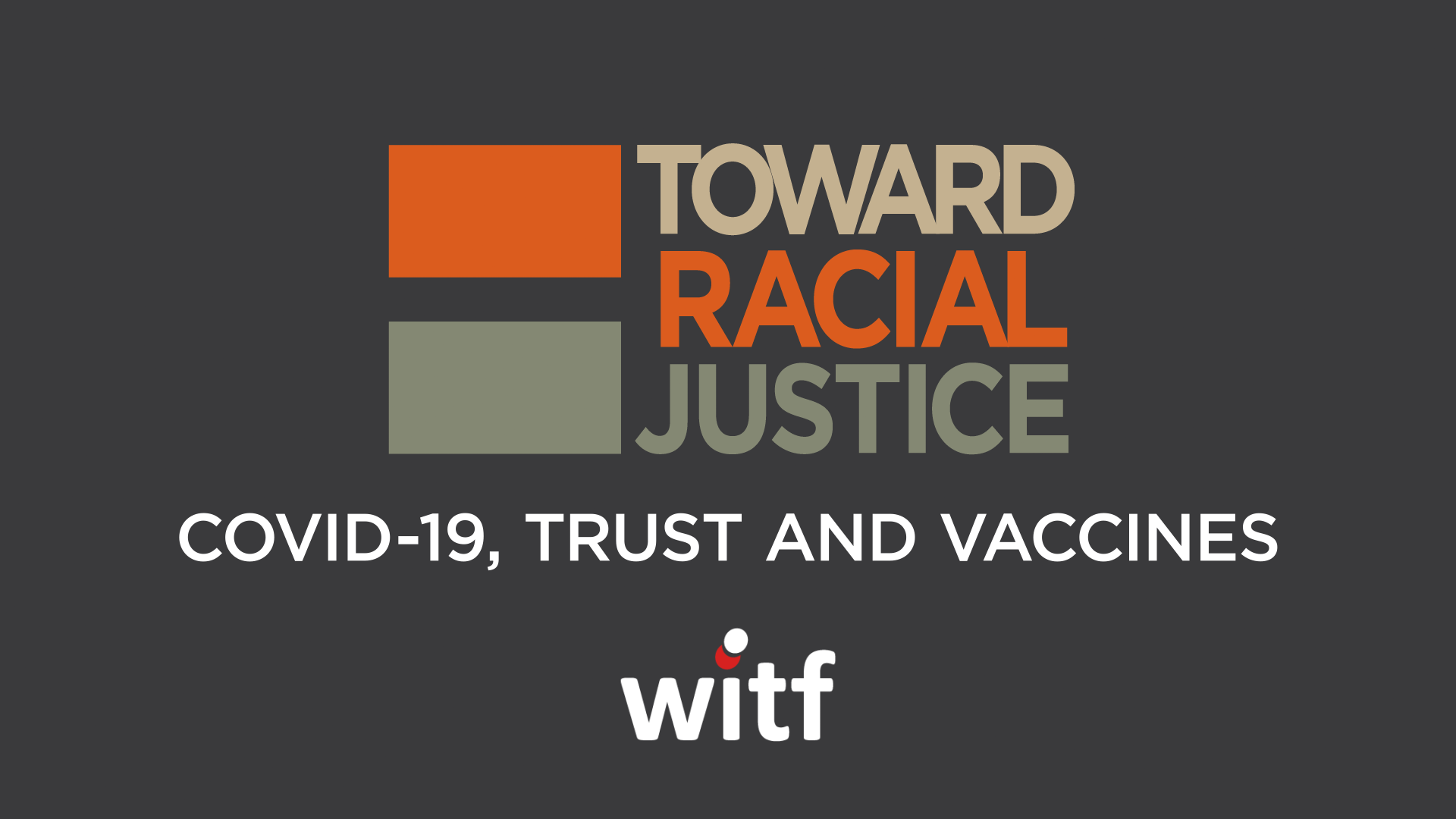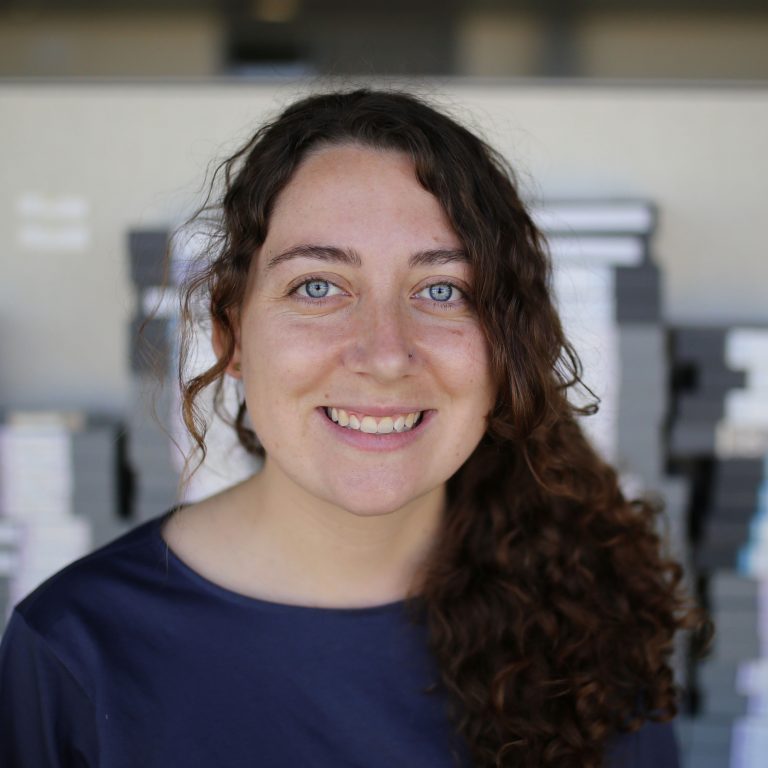
Public health experts say equity requires long-term commitment
As part of WITF’s Toward Racial Justice series, healthcare professionals discussed disparities highlighted by the COVID-19 pandemic, trust in medicine, and vaccine distribution.
-
Alanna Elder/WITF

The next installment of our Toward Racial Justice series will explore racial disparities in Pennsylvania’s education funding system. It takes place Thursday, March 4 at 7 p.m. on WITF’s YouTube channel.
(Harrisburg) — The Rev. Dr. Brenda Alton of University of Pittsburgh Medical Center Pinnacle in Harrisburg says during the spring and summer of last year, clergy in the majority-Black city were providing more funerals than they had in their entire careers, sometimes for members of the same families.
“That, of course, has piqued the interest of those in our community to search out what is going wrong – why is it just the Black and Brown community that seems to be dying at a higher rate?” said Alton, who is System Administrator at the medical center.
Data from the Centers for Disease Control and Prevention show Black, Latino, and Indigenous Americans are still more likely to die from COVID-19, due to a combination of inequities in exposure risks, health care access, and underlying conditions. The latter are linked to a concept known as social determinants of health – factors like environmental conditions and economic stability that increase a person’s risk of some health problems.
Alton said more people are now talking about how those factors lead to health disparities.
“We are seeing more attention via media, more attention even with cultural competency and diversity and inclusion issues that is bringing more highlight to the needs of Black and Brown people,” she said, “but we still have a ways to go.”
Dr. Marilyn Corder, chief of staff at United Medical Center in Washington, D.C. and an adjunct professor at Howard University, said preparing new doctors means teaching them to have cultural awareness of the populations they serve and to build relationships with their patients.
“As we train young physicians, we tell them, you have all the knowledge, they see that, but you have to make sure that they know that you care and that they can trust you,” she said.
Trust is a major theme in healthcare amid the push to get more Americans vaccinated and prevent another wave of infections, hospitalizations, and deaths.
Research from the Kaiser Family Foundation suggests more Black and Latino Americans, who are disproportionately affected by the health and economic impacts of the pandemic, say they are willing to take the vaccine than in surveys from late last year.
But hesitation is still an issue, and public health experts say there is work to do to close equity gaps in vaccine distribution.
“We still have a long way to go, right? There’s still this major trust gap, particularly when it comes to Black and Brown communities,” Toward Racial Justice moderator Charles Ellison said at a recent panel with public health professionals.
That trust gap comes from a history of unethical medical practices in the United States, Alton said, including the Tuskegee study, in which hundreds of Black men with syphilis were tested for decades without giving informed consent or receiving treatment.
Anika Jackson of Family First Health in York agreed that historical examples are part of why people may not trust medical institutions are there to help.
But she said, in her experience, what is even more important are the interactions people are having now.
“I’ve had an opportunity to talk with Black folks in my community, who can tell me story after story where they’ve gone to a medical provider or they’ve gone with a family member and they feel that they’re not getting the attention they need, or the medical provider is not trusting what they’re saying,” she said.
Research shows doctors are less likely to prescribe pain treatment for Black patients. And NPR found in a 2017 investigation that unconscious bias plays a role in the disproportionate maternal deaths of Black women.
Jackson said, given that context, getting people to trust the vaccines is not just about sharing the science that shows they are safe and effective.
“It’s, do I see people who I believe are like me, can relate to me, who understand me, who see me, who I trust, who say this is a good thing for me,” she said.
From that standpoint, she said, healthcare providers need to work with “community influencers,” like leaders of local organizations or faith groups.
The strategy is more effective if public health workers create such relationships before a crisis, added Dr. Ivan Walks, former D.C. chief health officer.
“If people don’t see you in the community before you need them to do something, they’re not going to come back and pay attention to you now that you have a problem, now that you’re embarrassed with your vaccination numbers and you want to come in and tell them it’s better for them if you do what they want,” he said. “The whole thing is challenging.”
Messaging is another challenge. Back in December, Walks and Ellison co-wrote a piece in the Philadelphia Inquirer, warning that the hype around the Pfizer and Moderna vaccines’ effectiveness could backfire.
“‘Oh, boy, 90 percent, 94 percent, 95 percent,’ and Charles, you and I tried to tell them, stop saying that,” Walks said.
Their concern was that if AstraZeneca’s vaccine, which has slightly lower effectiveness and would be easier to distribute, was approved, the differences could deter people from getting a shot, especially if they suspected race or income were a factor in determining who got which vaccine.
But Johnson & Johnson’s newly approved vaccine, which requires only one shot and no cold storage, carries the same potential conflict, Walks said.
“It feels like, by the time you get to me, there’s a reason why I should get something different,” he said. “So, people are asking questions: Am I going to get the same vaccine that Barack Obama got? And the answer is, maybe.”
He said, a more effective message would have been, all the COVID vaccines are rated higher than annual flu vaccines, which are considered good vaccines.
While some COVID vaccines may be more effective at preventing cases than others, all have eliminated hospitalizations and deaths in trials.
But vaccine distribution is not without equity problems, as Ellison noted during the panel discussion, citing data from Philadelphia’s “Vaccination Dashboard.”
“These gaps are really significant,” he said. “I just told you about Philadelphia and other cities, where they’re like cities in fact that either have high, major clusters of Black populations in them, they’re majority-Black cities, but they’re the minority of people who are receiving (the) vaccine.”
Race and ethnicity data has not been reported for all vaccinations. At the national level, KFF reports it’s only included for about 55% of people who’ve been vaccinated, and that’s just for the 34 states that are reporting the data at all. Pennsylvania happens to be one of them, and what data exists for the rest of the commonwealth, excluding Philadelphia, shows Black, Latino, and Asian patients underrepresented in the vaccinated population.
Healthcare workers in poorer areas of several cities reported an influx of wealthier people from other neighborhoods seeking their limited vaccine supply, a situation which, the New York Times reports, has contributed to racial and ethnic inequities in distribution. Some cities like Philadelphia and Los Angeles sent out codes or links intended for residents of specific neighborhoods, but in those situations, too, there have been reports of people “jumping the line” by getting hold of the information.
The government is sending vaccines to federally qualified health centers, which receive public funding to offer primary care on a sliding scale.
Mary Kelleher is Chief Medical Officer of Berks Community Health Center, one such institution in Reading.
“We have opened the vaccine to people that are not our patients,” she said, “but every conversation I have is, what about our patients? How many slots do we have for our patients?
Constantly putting that focus back on meeting the underserved patient population.”
People without reliable internet access have faced barriers in signing up to receive a vaccine. Kelleher said the commonwealth has required that there be a phone option, but as of mid-February, it hadn’t made much of a difference due to lags in supply.
Pa. has received 3.9 million vaccine doses and administered about 2.7 million, according to the CDC.
Alanna is part of the “Report for America” program — a national service effort that places journalists in newsrooms across the country to report on under-covered topics and communities



